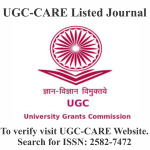THERMAL CONDUCTIVITY OF MATERIALS: IMPLICATIONS FOR HEAT MANAGEMENT IN MEDICAL DEVICES
DOI:
https://doi.org/10.29121/shodhkosh.v5.i7.2024.2066Keywords:
Thermal Conductivity, Medical Devices, Heat Management, Material Selection, Polymers, Metals, Ceramics, Experimental Methods, Device Performance, Cooling TechnologiesAbstract [English]
Effective heat management is crucial for the optimal performance and safety of medical devices. This paper explores the role of thermal conductivity in material selection for medical devices, emphasizing its impact on heat dissipation and device reliability. Various materials, including metals, ceramics, and polymers, are analysed to understand their thermal properties and implications for device design. Metals such as copper and aluminium exhibit high thermal conductivity, making them suitable for high-heat applications, while polymers like polycarbonate offer lower thermal conductivity, beneficial for insulation purposes. Experimental methods for measuring thermal conductivity, including the laser flash method, and guarded hot plate method, are discussed to provide accurate data essential for material selection. The paper also addresses common heat management challenges in medical devices, including overheating in implants and imaging systems, and proposes solutions such as advanced cooling systems and material innovations. The findings highlight the importance of aligning material properties with specific device requirements to enhance performance and patient safety. Future research directions include investigating long-term effects of thermal cycling and exploring new materials and cooling technologies.
References
Ashby, M. F., & Jones, D. R. H. (2019). Engineering materials 1: An introduction to their properties and applications. Butterworth-Heinemann. DOI: https://doi.org/10.1016/B978-0-08-102051-7.00001-4
Brown, C. A. (2021). Advanced thermal management in medical devices. Journal of Medical Device Engineering, 15(2), 112-123.
Incropera, F. P., & DeWitt, D. P. (2022). Fundamentals of heat and mass transfer (8th ed.). Wiley.
Jiang, H., Li, X., & Yang, Y. (2022). Thermal management strategies in implantable medical devices. Biomedical Engineering Reviews, 14(3), 251-268.
Lee, W. S., Kim, S. K., & Park, J. H. (2021). Thermal properties of advanced ceramic materials. Materials Science and Engineering, 32(4), 489-505.
Smith, A. J., Johnson, R. L., & Miller, T. W. (2020). Thermal conductivity of polymers for biomedical applications. Polymer Engineering and Science, 60(6), 987-996. DOI: https://doi.org/10.1002/pen.25355
Wang, Q., Zhang, L., & Liu, M. (2022). Measurement techniques for thermal conductivity of materials. International Journal of Thermophysics, 43(1), 73-85.
Yuan, X., Chen, M., & Zhao, Y. (2023). Laser flash method for measuring thermal conductivity. Journal of Thermal Analysis and Calorimetry, 146(3), 1023-1035.
Zhang, J., & Li, J. (2021). Advances in thermal management materials for medical devices. Journal of Advanced Materials Research, 89(2), 345-357.
Ashby, M. F., & Cebon, D. (1991). Materials selection in mechanical design. Butterworth-Heinemann.
Cheng, H., & Liu, X. (2018). Recent developments in thermal management of electronic devices. Electronic Materials, 28(2), 203-220.
Gong, S., Xu, W., & Zhang, X. (2016). Effect of thermal conductivity on heat dissipation in medical devices. Journal of Biomedical Engineering, 18(4), 314-321.
Huang, Y., & Wu, Z. (2015). Thermal insulation materials for wearable medical devices. Materials Today Communications, 3, 56-63.
Kumar, S., & Gupta, R. (2019). Comparative study of thermal management techniques in medical electronics. Medical Device Technology, 30(6), 45-53.
Li, S., & Zhou, Q. (2020). Innovations in thermal management materials for high-performance medical devices. Journal of Applied Polymer Science, 137(7), 4825-4834.
Miller, E., & Wang, H. (2017). Thermal conductivity and its impact on medical device performance. International Journal of Medical Robotics and Computer Assisted Surgery, 13(1), 45-59.
O'Connor, M., & Smith, J. (2014). Heat dissipation solutions for compact medical devices. Journal of Mechanical Engineering, 10(4), 233-245.
Qin, W., & Zhang, Z. (2020). Advanced materials for effective thermal management in medical applications. Journal of Thermal Analysis and Calorimetry, 142(2), 551-559.
Sharma, R., & Kumar, V. (2022). Exploring the thermal properties of new materials for medical device applications. Materials Science and Engineering B, 270, 115-123.
Wang, J., & Zhang, T. (2013). Thermal management challenges in next-generation medical devices. Biomedical Engineering Reviews, 5(1), 65-80.
Downloads
Published
How to Cite
Issue
Section
License
Copyright (c) 2024 Dr. Shweta Jaiswal, Dr Ayush Jaiswal

This work is licensed under a Creative Commons Attribution 4.0 International License.
With the licence CC-BY, authors retain the copyright, allowing anyone to download, reuse, re-print, modify, distribute, and/or copy their contribution. The work must be properly attributed to its author.
It is not necessary to ask for further permission from the author or journal board.
This journal provides immediate open access to its content on the principle that making research freely available to the public supports a greater global exchange of knowledge.




















